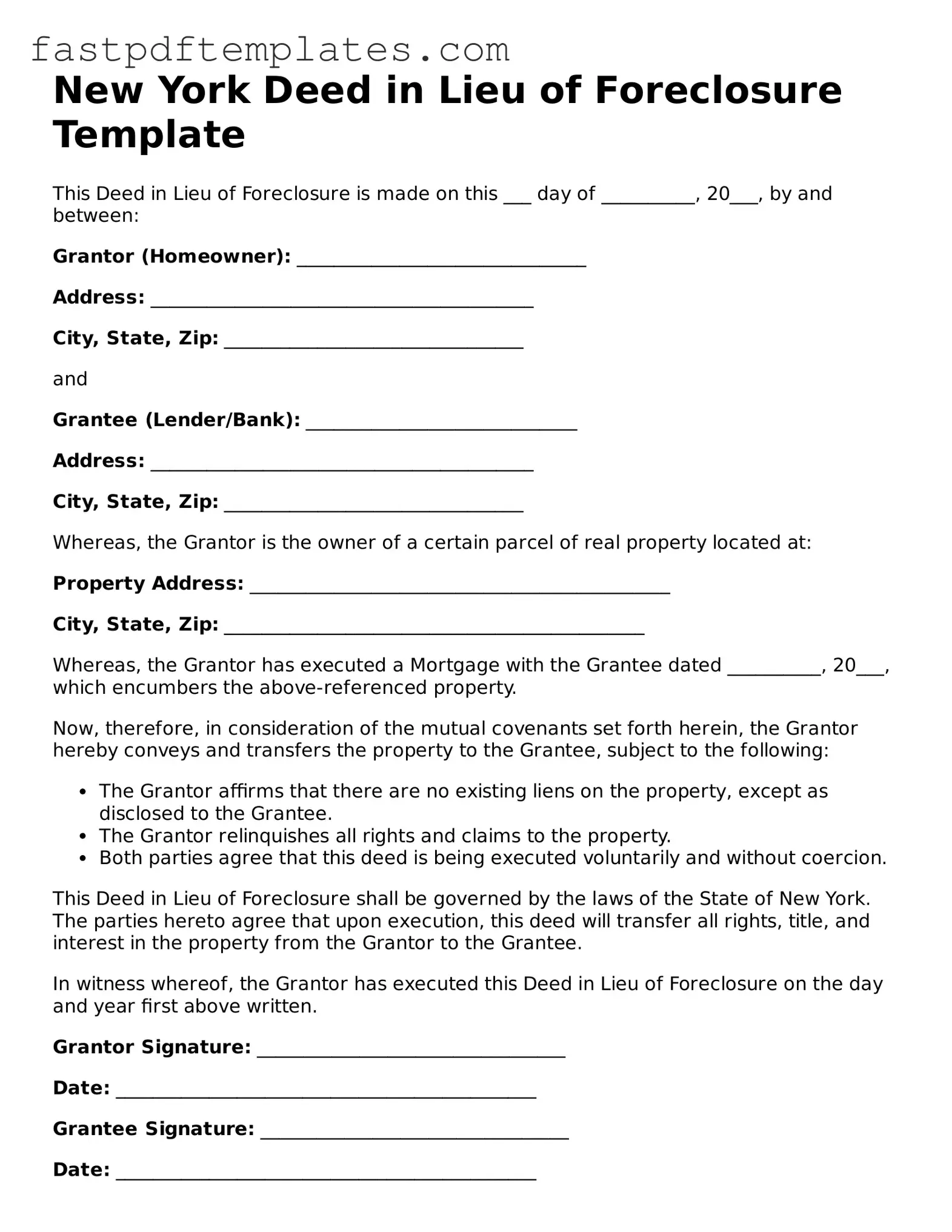New York Deed in Lieu of Foreclosure Template
This Deed in Lieu of Foreclosure is made on this ___ day of __________, 20___, by and between:
Grantor (Homeowner): _______________________________
Address: _________________________________________
City, State, Zip: ________________________________
and
Grantee (Lender/Bank): _____________________________
Address: _________________________________________
City, State, Zip: ________________________________
Whereas, the Grantor is the owner of a certain parcel of real property located at:
Property Address: _____________________________________________
City, State, Zip: _____________________________________________
Whereas, the Grantor has executed a Mortgage with the Grantee dated __________, 20___, which encumbers the above-referenced property.
Now, therefore, in consideration of the mutual covenants set forth herein, the Grantor hereby conveys and transfers the property to the Grantee, subject to the following:
- The Grantor affirms that there are no existing liens on the property, except as disclosed to the Grantee.
- The Grantor relinquishes all rights and claims to the property.
- Both parties agree that this deed is being executed voluntarily and without coercion.
This Deed in Lieu of Foreclosure shall be governed by the laws of the State of New York. The parties hereto agree that upon execution, this deed will transfer all rights, title, and interest in the property from the Grantor to the Grantee.
In witness whereof, the Grantor has executed this Deed in Lieu of Foreclosure on the day and year first above written.
Grantor Signature: _________________________________
Date: _____________________________________________
Grantee Signature: _________________________________
Date: _____________________________________________
Notary Public:
State of New York
County of _____________________
Subscribed and sworn before me this ___ day of __________, 20___.
Notary Signature: __________________________________
My Commission Expires: ____________________________
